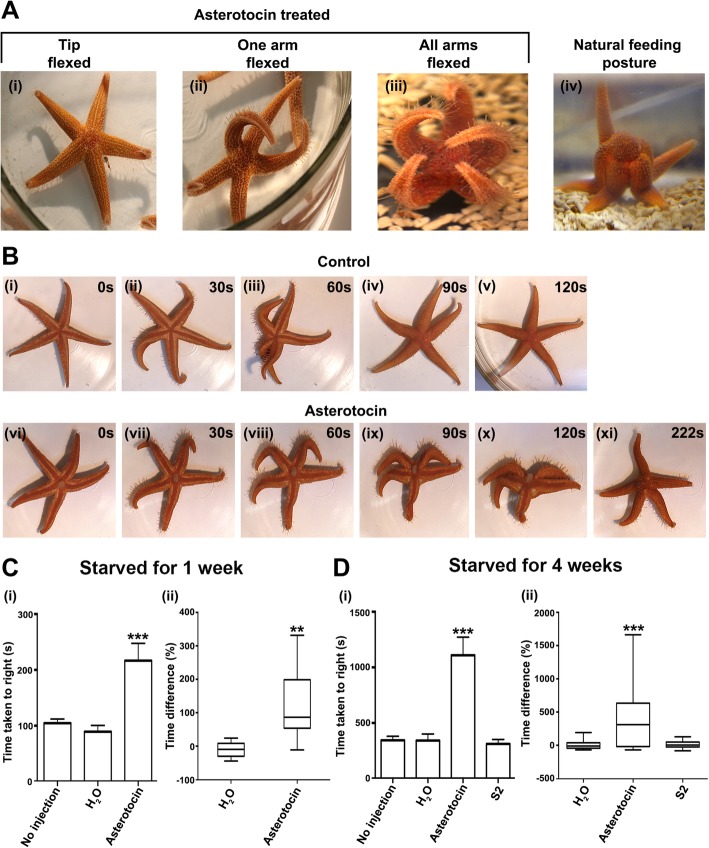Fig. 9.
Asterotocin induces a feeding-like posture that impairs righting behaviour in A. rubens. a Asterotocin-induced changes in posture in A. rubens: (i) soon after injection, with arm tips curled upwards; (ii) within 10 min, with one or more arms curled upwards; and (iii) within 20 min, with all arms curled upwards and resembling the natural feeding posture (iv). b Images from representative videos show that asterotocin-injected starfish (vi–xi) take longer to right than water-injected starfish (i–v). c Effect of asterotocin on righting behaviour following 1-week starvation. (i) Mean (± SEM) righting time in asterotocin-injected starfish is 217 ± 31 s (n = 10) and significantly longer than in non-injected (105 ± 8 s; n = 20, pooled data) and water-injected starfish (89 ± 11 s; n = 10); (P < 0.0001; one-way ANOVA with Dunnett’s multiple comparisons test). (ii) Mean percentage righting time difference between water-injected and non-injected starfish is − 11 ± 7%, whereas between asterotocin-injected and non-injected starfish, it is 127 ± 36% (P = 0.0005; Mann-Whitney U test; n = 10). d Testing effects of asterotocin and S2 on righting behaviour following 4-week starvation. (i) Mean (± SEM) righting times in water-injected animals (341 ± 59 s; n = 20) and in S2-injected animals (312 ± 40 s; n = 20) are significantly different. Asterotocin causes a significant increase in righting time (1110 ± 162 s; n = 20) compared with non-injected (n = 60, pooled from the three treated groups), water-injected and S2-injected animals (P < 0.0001; one-way ANOVA with Dunnett’s multiple comparisons test). (ii) Mean percentage righting time difference between non-injected and water-injected animals (− 1.8 ± 13%) and between non-injected and S2-injected animals (15 ± 12%) are not statistically significant, but there is statistical significance between non-injected and asterotocin-injected animals (414 ± 104%; P < 0.0001; one-way ANOVA with Dunnett’s multiple comparisons test; n = 20)

